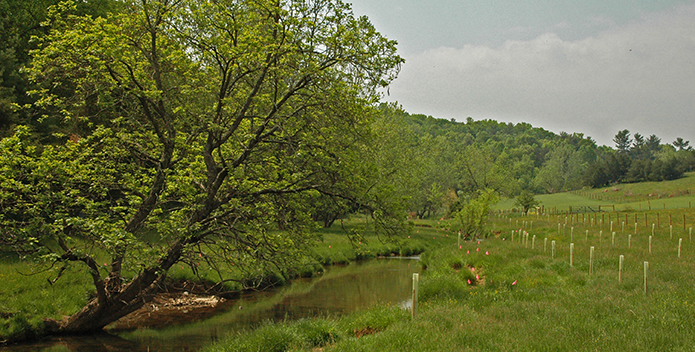Restoring Streams, Creating Habitat, and Improving Water Quality
What can landowners in Pennsylvania do to protect water quality in their rivers and streams? One option is to make their streamside property or farmland more conservation-friendly. The Conservation Reserve Enhancement Program (CREP) provides funding for them to do so.
CREP participants receive funding to create streamside forested buffers, wetlands, wildlife habitat, grass filter strips, native grass stands, and more. Through CREP, the Chesapeake Bay Foundation (CBF) and its partners have planted more than 1,800 miles of streamside buffers in the Chesapeake Bay watershed.
CBF works with the United States Department of Agriculture, Pennsylvania Department of Environmental Protection, the Pennsylvania Game Commission, and others to put CREP funds to use. CBF has six full-time field staff working with landowners enrolled in CREP.
Benefits of CREP
CREP is one of the most cost-efficient and effective programs in the Commonwealth for reducing pollution in the Chesapeake Bay watershed. Benefits include:
- Income for landowners. CREP will reimburse up to 100 percent of the installation cost and provide an annual rent, which is usually from $40 to $540 per acre/per year with the average rental rate across the state at $100. The contract period is typically 10-15 years..
- Good for the environment. Forested buffers reduce stream bank erosion, protect natural resource land, provide habitat for fish and wildlife, reduce flooding, and more.
- Free assistance. CREP participants receive free assistance to plan, design, and implement buffer projects.
- Doubled cost share. Planting new or protecting existing forested buffers earns up to 100 percent cost share for other priority practices.
Landowners with grazing animals receive additional benefits because CREP will also pay to construct fences, stabilize crossings, and install alternative water supplies.
Who is Eligible?
The program is open to rural landowners with idle land, pasture or cropland land that:
- Is within 180 feet of a stream (including small or seasonal streams), pond, lake, or wetland with open water;
- Has less than 30 percent coverage by woody plants; and
- They've owned for at least one year.
Find Out More
- Download our CREP brochure
- You also can visit the Pennsylvania CREP website.





